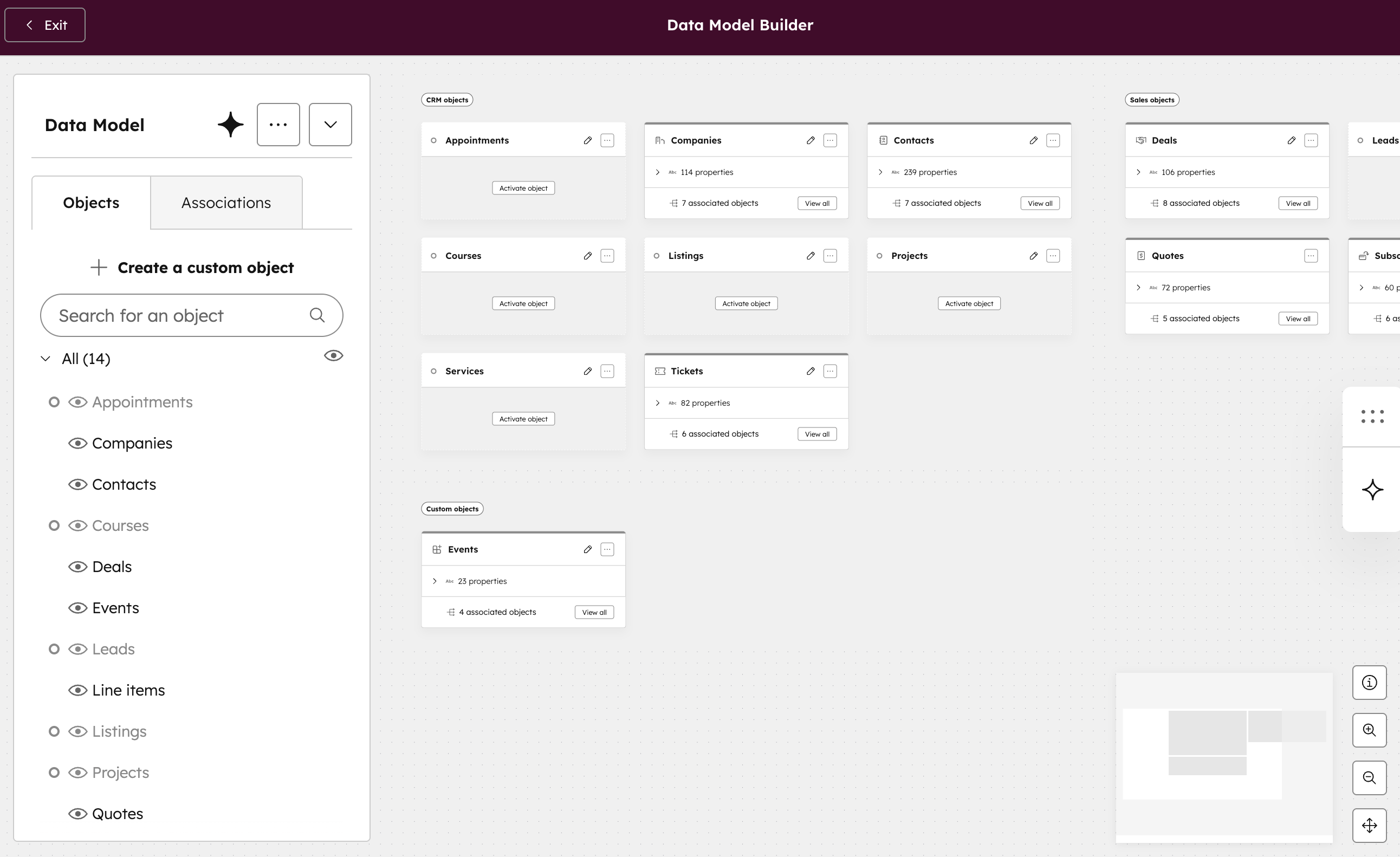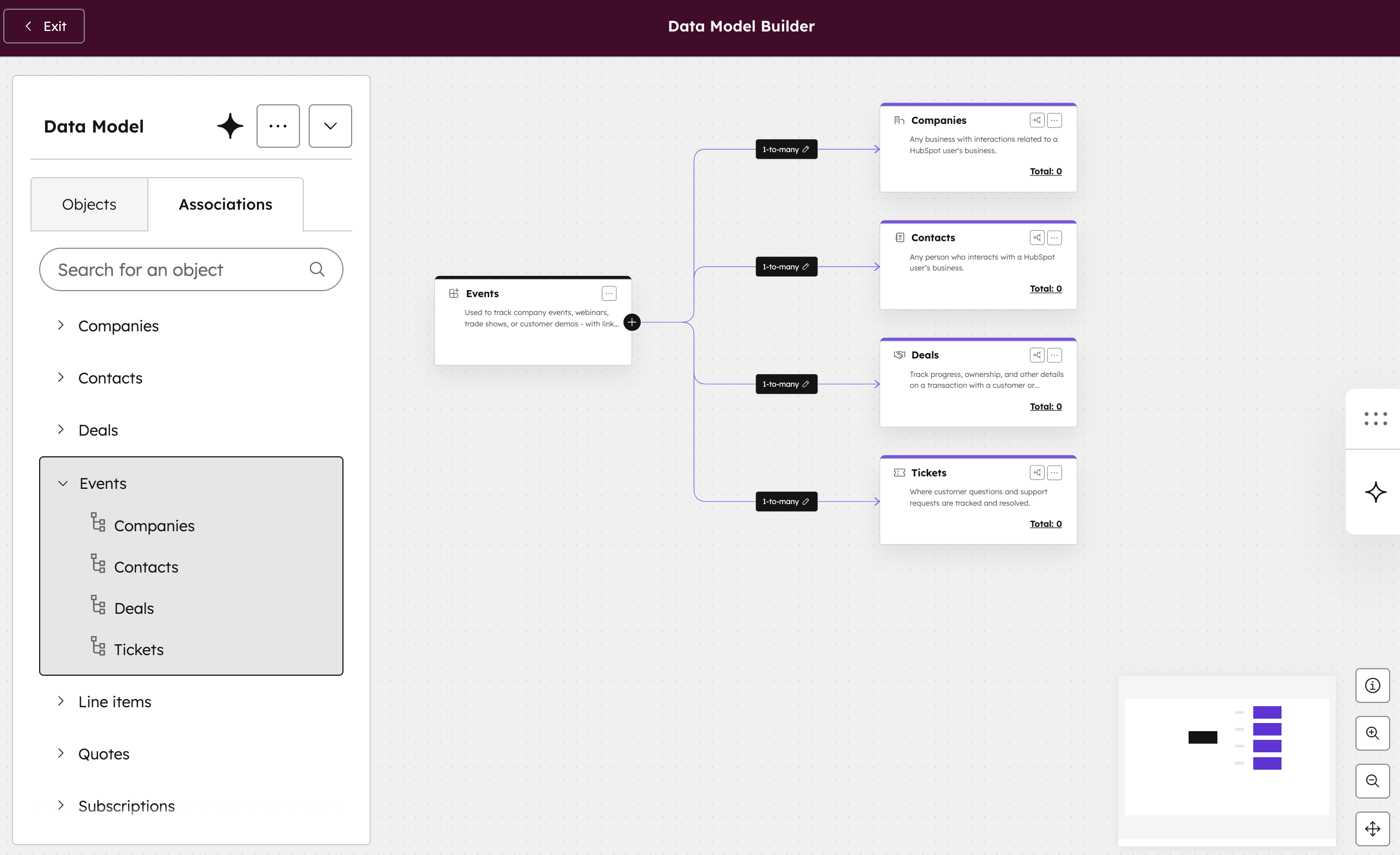-min.png)
Custom objects don’t always appear where you expect them to in HubSpot’s reports.
Users often assume they’ll behave exactly like contacts or deals, but cross-object and attribution reports require Enterprise features or extra setup.
Even when you do have access, reports can show blank data if your associations aren’t configured correctly.
1. Use the Custom Report Builder
Go to Reporting → Reports

then → Create report → Custom Report → Click Next

This tool lets you combine custom objects with standard ones like Contacts, Companies, or Deals in a single view.
In this example I'm using my custom object: Events.

Drag and drop properties from your custom object and any standard objects you want to include, to start building your report:

2. Check Your Associations
Cross-object reports depend entirely on associations.
Open Settings → Data Management → Data Model → Click Edit Data Model to confirm your custom object is connected to the standard ones you want to include in reports.

This is what the Data Model looks like.
At the bottom of the canvas you can see your custom objects:

On the custom object card, there is a note of the number of associations.
Click View all to see whether your custom object is associated to the standard objects you want:

3. Export or Use a BI Tool (Workaround)
If native reporting is still limited, export data to a spreadsheet or BI tool like Google Sheets, Looker, or Tableau for deeper analysis.
This is especially useful for portals without Enterprise access.
You can do this from Actions within the report.


4. (Enterprise Bonus) Use Datasets
If you’re on Enterprise, use Datasets under Data Management.
Datasets let you prepare joined data between custom and standard objects before visualizing them, which simplifies complex reporting.


Next, click Add source to add the standard object you want to link:
.png)


Most reporting frustrations with custom objects come from two things: missing associations and using the wrong report type.
Once those are fixed, HubSpot can visualize your custom data almost as easily as native records - and datasets make it even smoother if you’re on Enterprise.